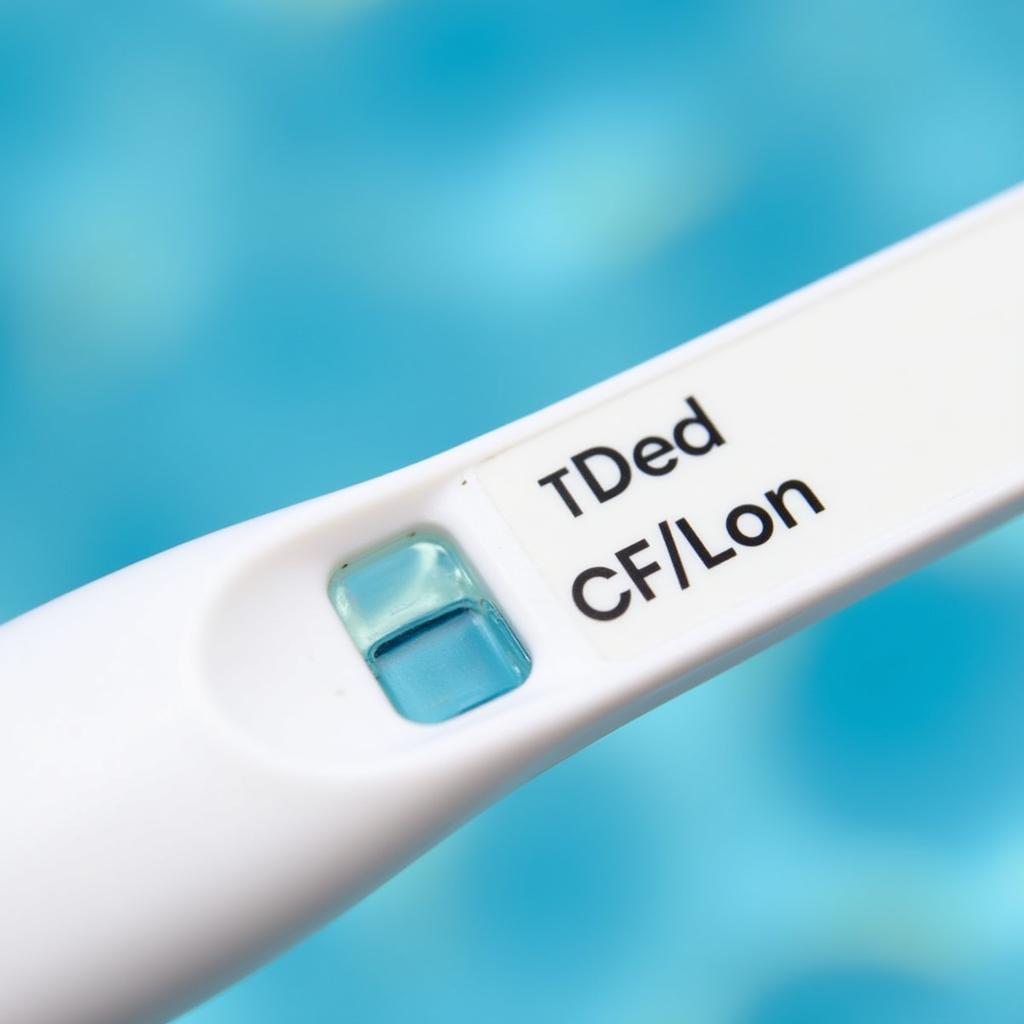“Total chlorine is high, free chlorine is low.” This statement can cause confusion for many pool owners. Understanding the difference between these two types of chlorine and the reasons behind this imbalance is crucial for maintaining a safe and enjoyable swimming experience.
What Does “Total Chlorine” and “Free Chlorine” Mean?
Before delving into the reasons behind the disparity, let’s define the key players:
- Free Chlorine (FC): This is the active and effective form of chlorine that directly eliminates bacteria and contaminants in your pool water. It’s the chlorine that’s “free” to do its job.
- Combined Chlorine (CC): When free chlorine reacts with contaminants like sweat, urine, or body oils, it forms combined chlorine. This type of chlorine has a strong, unpleasant odor and is less effective at sanitizing.
- Total Chlorine (TC): As the name suggests, this represents the total amount of chlorine in your pool water – the sum of both free and combined chlorine (TC = FC + CC).
 Pool Test Kit Showing High Total Chlorine and Low Free Chlorine
Pool Test Kit Showing High Total Chlorine and Low Free Chlorine
Why is My Total Chlorine High But Free Chlorine Low?
When your total chlorine reading is high but your free chlorine is low, it’s a telltale sign of a “chlorine demand” problem. Essentially, your pool water has a high level of contaminants, also known as chloramines, which are consuming the free chlorine. This situation is often referred to as having a “dirty” pool.
Here are some common causes:
- Heavy bather load: A sudden influx of swimmers introduces more contaminants into the pool, increasing the chlorine demand.
- Insufficient filtration: If your pool filter isn’t running long enough or is malfunctioning, contaminants won’t be removed efficiently.
- Environmental factors: Sunlight, heat, and debris like leaves and grass can break down free chlorine faster, requiring more frequent replenishment.
- Improper water balance: Maintaining the correct pH, alkalinity, and calcium hardness levels is essential for optimal chlorine efficacy.
- Infrequent shocking: “Shocking” your pool with a high dose of chlorine helps break down combined chlorine and restore free chlorine levels.
The Risks of High Combined Chlorine (Low Free Chlorine)
While high total chlorine might seem reassuring, it’s the free chlorine that truly matters. High combined chlorine levels can lead to:
- Strong chlorine odor: The characteristic “chlorine smell” often associated with pools is actually a sign of high combined chlorine, not necessarily high total chlorine.
- Eye and skin irritation: Combined chlorine can irritate swimmers’ eyes and skin, causing redness, itching, and dryness.
- Respiratory problems: In some cases, high combined chlorine levels can exacerbate asthma or cause other respiratory issues.
- Ineffective sanitation: With low free chlorine, your pool becomes a breeding ground for bacteria and algae, posing health risks to swimmers.
How to Fix High Total Chlorine and Low Free Chlorine
The solution lies in restoring the balance between free and combined chlorine. This involves two main steps:
- Shock Treatment:
- Use a chlorine-based shock treatment to oxidize the combined chlorine, breaking it down into harmless byproducts.
- Follow product instructions carefully and ensure adequate water circulation during and after shocking.
- Water Testing and Balancing:
- Test your pool water regularly using a reliable test kit or strips.
- Adjust the pH to the ideal range of 7.2-7.8.
- Ensure proper alkalinity and calcium hardness levels.
- Run your filtration system for an adequate amount of time each day.
Preventing Chlorine Imbalance
Prevention is key to maintaining a healthy and inviting pool:
- Regular Maintenance: Test your water frequently (2-3 times per week) and adjust chemical levels as needed. Run your filter for a sufficient duration (8-12 hours per day).
- Encourage Good Hygiene: Remind swimmers to shower before entering the pool to minimize the introduction of contaminants.
- Prevent Sun Exposure: Use a pool cover when the pool is not in use to reduce chlorine loss from sunlight.
Maintaining Safe and Sparkling Water
Understanding the dynamics of total chlorine and free chlorine is vital for proper pool care. By addressing chlorine imbalances promptly and adopting proactive measures, you can enjoy a clean, clear, and healthy swimming environment all season long.
[free chlorine meter]
[dpd free chlorine reagent]
FAQ
1. How often should I shock my pool?
It’s generally recommended to shock your pool weekly or bi-weekly, depending on bather load and weather conditions. However, if your free chlorine levels are significantly low, you may need to shock more frequently.
2. Can I swim in my pool after shocking?
It’s best to wait until free chlorine levels have dropped to a safe range (1-4 ppm) before swimming. Consult the instructions on your shock treatment product for specific waiting times.
3. Why does my pool still smell like chlorine after shocking?
If your pool still has a strong chlorine odor even after shocking, it could indicate that the shock treatment wasn’t sufficient, or there are other underlying water balance issues.
4. What if my free chlorine levels are too high?
High free chlorine levels can also be irritating. Allow the chlorine to dissipate naturally or partially drain and refill the pool to lower the concentration.
5. Is it normal for total chlorine to be higher than free chlorine?
It’s normal for total chlorine to be slightly higher than free chlorine. However, if the difference is significant, it indicates a high combined chlorine level that needs to be addressed.
Need More Help?
For personalized assistance with your pool water chemistry or any other pool maintenance concerns, contact our experts at:
Phone Number: 0972669017
Email: [email protected]
Address: 142 Trần Nhân Tông, Yên Thanh, Uông Bí, Quảng Ninh, Việt Nam.
Our dedicated customer support team is available 24/7 to provide you with expert guidance and ensure a safe and enjoyable swimming experience.